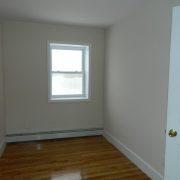Drywall Installation Costs
For most drywall builders, installing it is the easiest part. In fact, many of them started as installers and worked until they could start their own companies. Because of this, many feel very comfortable doing this work. The discomfort comes when they have to estimate the cost of the work. With a proper systematic method, anyone can calculate this cost without undergoing much mental anguish.
Instructions
- Measure the overall area where you will want to install the panels. Multiply the width by the height of each wall or ceiling section to determine the square footage and then add all the numbers.
- Calculate the cost of the panels by dividing the square footage by 32 or 48, depending on whether the panels you’re using are 4 by 8 feet or 4 by 12 to determine the number of panels you need and multiply this number by the price of each one. Remember to include sales tax.
- Multiply the number of panels that you need by 24, if you will be using the 4 by 8 feet, or 36, if you’re going to use 4 by 12 foot panels, to determine the linear feet of tape you’ll need. Divide this number by 250 or 500 (most common sized rolls) to determine the number of rolls you’ll need. Calculate the cost by multiplying the number of rolls by the price per roll.
- Divide the square footage by 400 to determine the number of buckets of joint compound that will be required. Multiply the number of buckets by the individual price to determine the cost.
- To determine the number of screws you need, divide the square footage by 300. The result is how many pounds of 1 ¼” screws you’ll need. Select a box of screws containing at least this weight and note the price.
- Next measure out the amount of edger that is needed by adding the length of all outside corners. The edger comes in sections 8 feet and 10 feet, so multiply the number of sections you will require by the individual price to determine the cost.
- Estimated the cost of getting the drywall installed by multiplying the price of installation per square foot by the square footage of drywall you need installed. In this you must include worker’s compensation insurance, if you’re going to pay. Contact your insurance company for instructions on how to calculate this compensation, as different states and different companies use different methods.
- Also include any additional costs, such as debris removal (call a cleaning company for construction sites) and protection of the area. This may include plastic tarps for the areas not being worked on and a protectant for the floor. Each work area will be different, so pay attention to each, since what is needed for one might be different for another.
- Add the totals for each section to determine the total cost of all the work. To determine this, multiply this number by your profit margin and overheads. This will depend largely on your location and the size of the company. A small company working in a rural area may only need 15 to 20 percent margin, while the same company work in an urban environment will require 10 or 20 percent.






